Every Command & Conquer game, ranked from worst to best
Command & Conquer's many thematic twists and turns make it one of the most varied strategy series on PC.
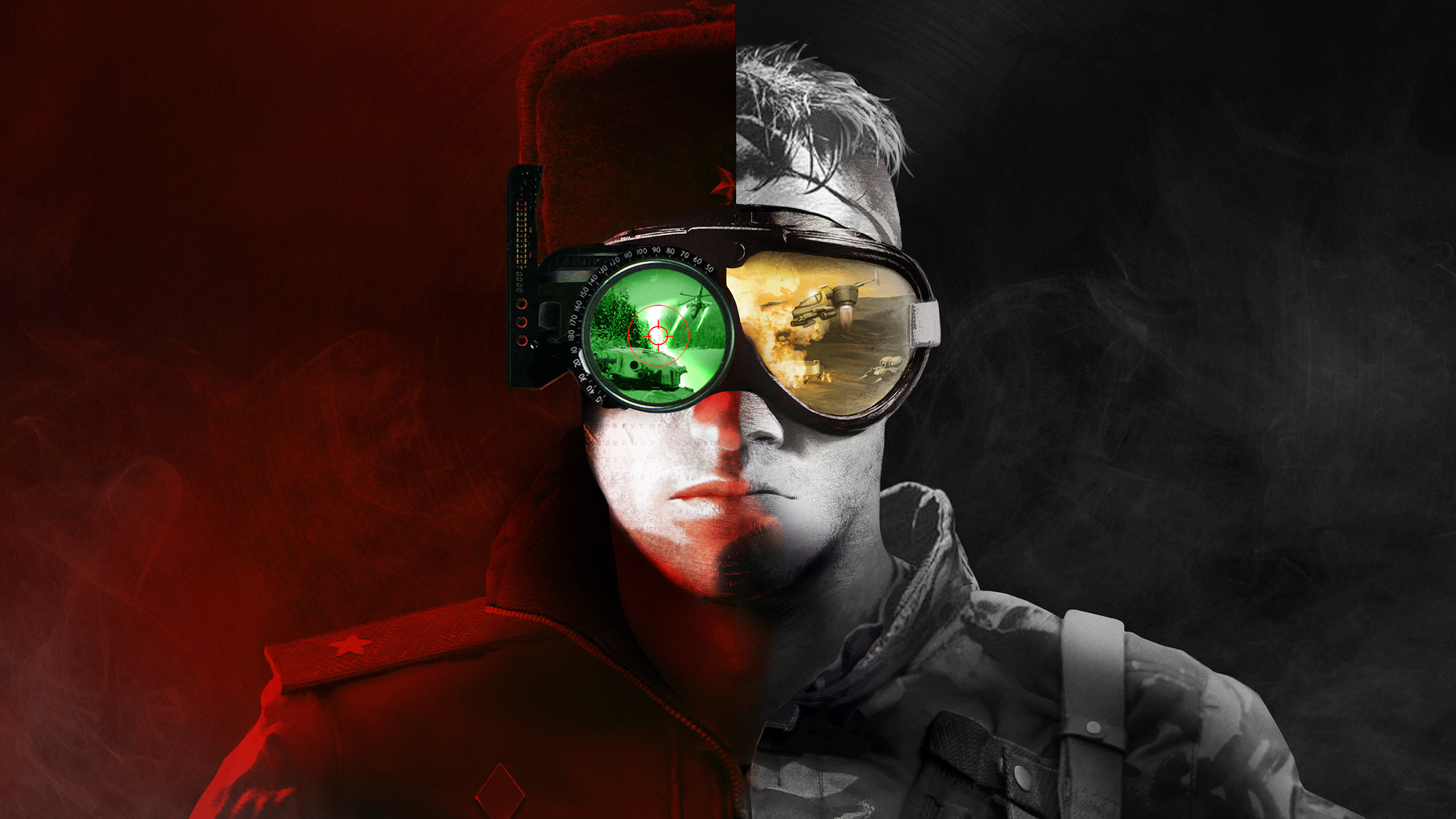
Command & Conquer has been with us for almost 30 years, and while real-time strategy's glory days are sadly far behind it, the love for Westwood's (RIP) speedy, flavourful series remains strong. The unit barks, FMV cutscenes and brilliant soundtracks have left an indelible mark on the souls of strategy gamers. But for all its highs, there have been quite a few lows. The series has spawned some of the best games ever made, and a bunch of absolute stinkers—especially during this post-Westwood era.
Naturally, this means we've gotta rank them. What's the best Command & Conquer game? What's the ones you should avoid at all costs? Once you've finished reading this, you'll be able to answer that important question.
Command & Conquer: Rivals (2018)
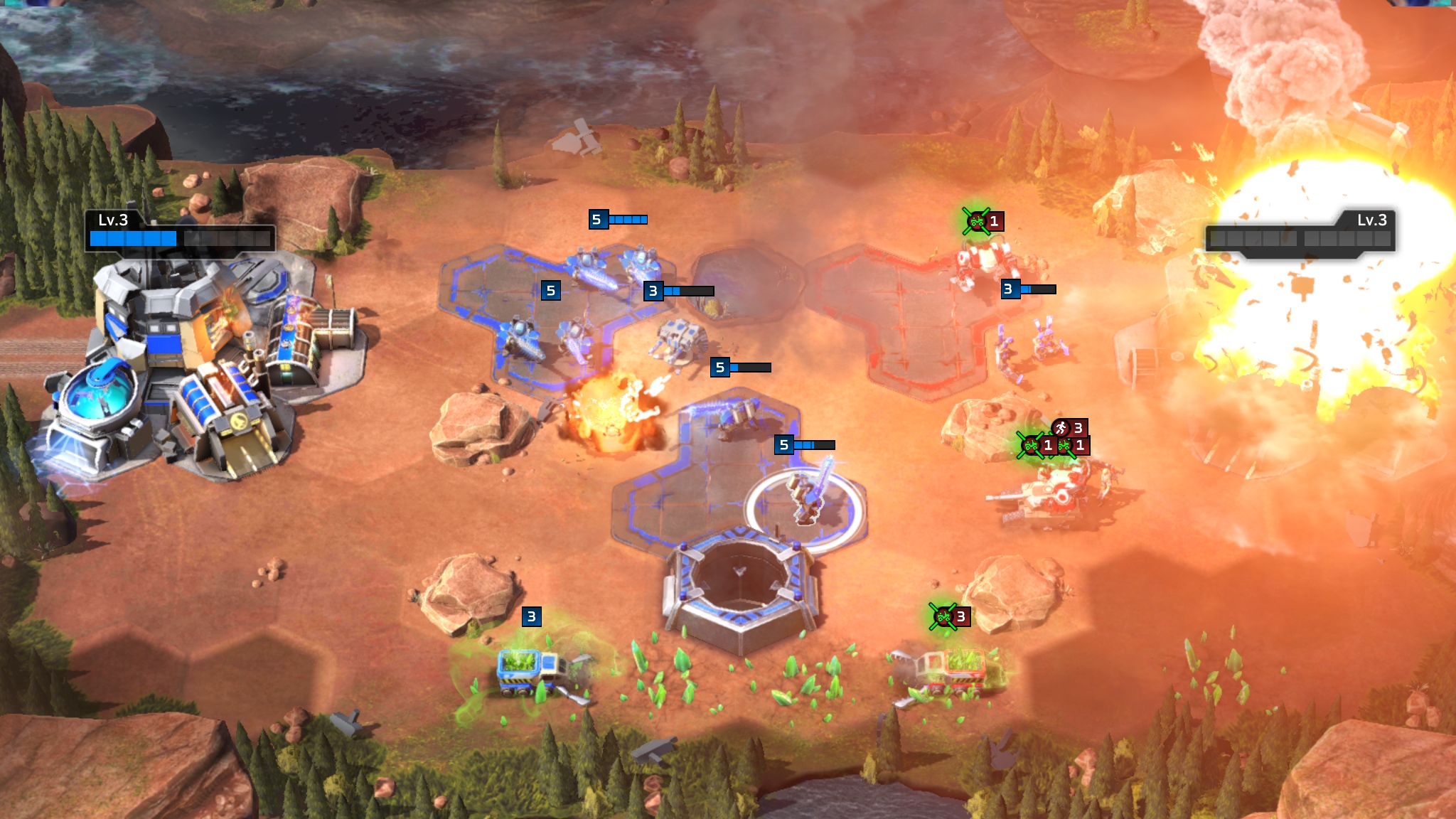
Command & Conquer: Rivals is a free-to-play mobile travesty with nothing to recommend it. It isn't a C&C game, and isn't a particularly good mobile game. It has few of the series' hallmarks, a generic cartoon aesthetic, no interest in tactics, and features a horrible, microtransaction-heavy business model.
This isn't even a case of EA wheeling out the corpse of C&C for a quick buck. A corpse would be better than this. Even if this had been a genuine attempt to make a C&C mobile game, what's the point? The platform isn't built for proper real-time strategy games. The result is a game nobody asked for, and which never justified its existence. Despite this, it's still around, tragically milking whales.
Command & Conquer: Tiberium Alliances (2012)

Command & Conquer: Tiberium Alliances is probably still best known for the accusations of plagiarism, after it was accused of ripping off Warhammer 40k tanks. There's not much more to say about it, frankly. It's at least more C&C-themed than Rivals, but transposed to a browser-based MMORTS. Who's this for? People desperate for more C&C and who will take a punt on anything that loosely resembles the beloved series, sadly.
It's grindy, arguably P2W, and while it might scratch an itch if you're specifically looking for an RTS to play on your browser, who's really doing that in 2024? Crucially, it's just not a good C&C game. It has the aesthetic and is full of nods to its predecessors, but it's just not very fun to play, failing to remotely capture what drove C&C to its greatest heights.
It's not the worst thing EA has done with the series, but it's a close second.
Keep up to date with the most important stories and the best deals, as picked by the PC Gamer team.
Command and Conquer 4: Tiberian Twilight (2010)

If you've ever wondered why we haven't had a new Command & Conquer game in nearly 15 years, this is why. Command & Conquer 4: Tiberian Twlight is so far removed from the talent and inspired design that made the original games great that it's barely recognisable. Create an online account and play in timed team-vs-team matches. Pick a class and then spew a series of generic future-tanks and laser-armed robots from your mobile factory to capture strategic points. Buy upgrades for your units and use their special abilities as they counter each other in rock-paper-scissors gameplay. Witness the shallow breathing of this drained husk that was once a proud game series.
EA’s takes on C&C have always been sparse on new ideas, but C&C4 marks the point where it stopped bothering to even try copying Westwood’s old ones, preferring to instead take a hodge-podge of features from whatever other games were popular at the time and mash them together. It’s a tragic but inevitable end for the series—after EA bought Westwood in 1998 and then closed the studio in 2003, firing the people who created the series with innovation and passion, C&C survived in name only.
It’s not that it messed up the series’ beloved formula, it completely destroyed it. Resource harvesting no longer exists. You pump out a stream of units stopping only when you hit the population cap, then throw them at the enemy in a constant slog of attrition, your options restricted by your ‘class’—frontline brawlers, base buildings and aircraft split up between offense, defense or support roles. It’s no longer about destroying your enemy, but simply holding control points until you’re victorious; should you wipe out an enemy they just respawn in a new construction vehicle to continue the tug-of-score. For the last entry in a series full of great memories, C&C4 couldn’t be more forgettable.
Command and Conquer: Sole Survivor (1997)
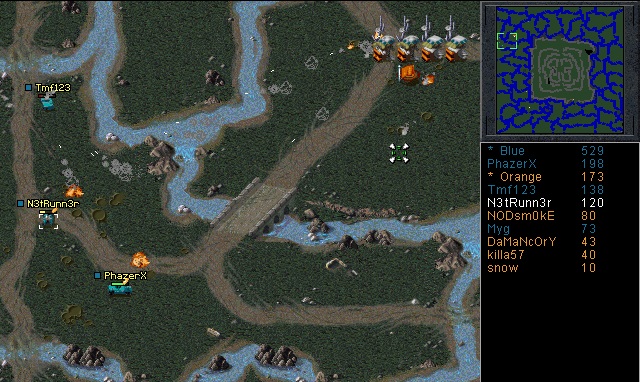
This game is one most C&C fans have probably never heard of, much less played. But Command & Conquer: Sole Survivor really exists—or existed, anyway, back in late 1997 as a spin-off to the original Command & Conquer. Players selected a single unit from C&C and battled online in matches of up to 50 opponents, collecting power-up crates around the map to grow stronger.
But it was barely developed beyond this simple concept—Sole Survivor would’ve been better served as a multiplayer mode in the original game than as its own spin-off title. With some more time and effort, this online battle arena could’ve had a more beloved place in gaming history; playing a deathmatch as a single unit in an RTS was a fun idea, but it needed greater depth and complexity.
It's a shame it came out before the dawn of MOBAs as a genre years later. Concepts like creeps and more distinct objectives would have greatly improved its staying power. What keeps Sole Survivor from the bottom of the list is that it was kinda weird and experimental, an attempt to explore new ideas within a series that had only recently become a PC gaming obsession. It differs from stuff like Rivals because it wasn't just some cynical, disconnected thing that had been slapped with the C&C name—it was a novelty with some good ideas that were never quite realised.
Command and Conquer: Red Alert 3 (2008)
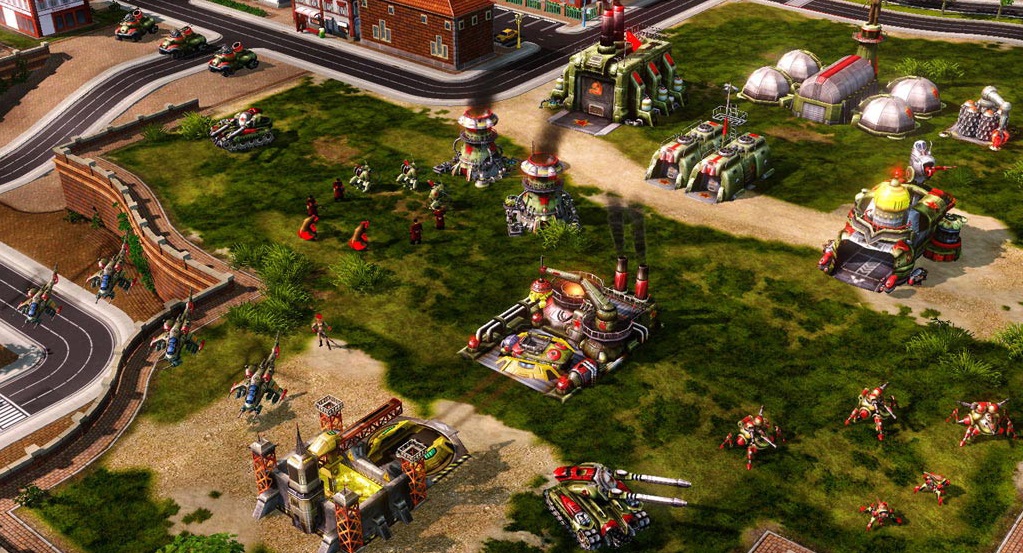
Command & Conquer: Red Alert 3 deserves at least some love thanks to Tim Curry's absurd performance as Colonel Anatoly Cherdenko. It's utterly unhinged. The hammy FMV cutscenes were cranked up to 11 for this one, and they really typify RA3. It's RA2, but zanier.
RA2’s gameplay features were taken to their extreme, most notably the way that every damn unit in RA3 has an activated ability. Leech Beam. Aegis Shield. Turbo Charge. Paralysis Whip. Even the damn attack dog has a Sonic Bark. It’s a hamfisted attempt to build upon RA2’s interesting and unique units. Where RA2’s units had their quirks built into their standard functions like moving or attacking, RA3 simply takes a bucket full of different powers you could find in any MOBA and throws them at you.
How the units function is only one half of where RA3 stumbles; their aesthetic design is another poor attempt at imitation. RA2's wackier units were the highlights in a mostly conventional army. When you saw a Giant Squid rocking a Destroyer to death or Yuri’s flying saucer woo-wooing around and stealing your money, it was weird by comparison. RA3’s units are all weird. We have attack bears and shrink-ray helicopters and a cannon that launches your units, just like how crazy RA2’s units were! We have a new Japanese faction with anime-like robo-units and psychic schoolgirls! The Flak Trooper is complaining about gulags and we paid Tim Curry and George Takei to chew the scenery just like Romanov and Yuri.
It's a game in competition with itself, and its predecessor, to prove how silly it can be. It takes fun highlights from RA2 and then makes that the whole design, and that's where it gets a bit lost, becoming a caricature of itself where nothing is really able to stand out.
Command and Conquer 3: Tiberium Wars (2007)
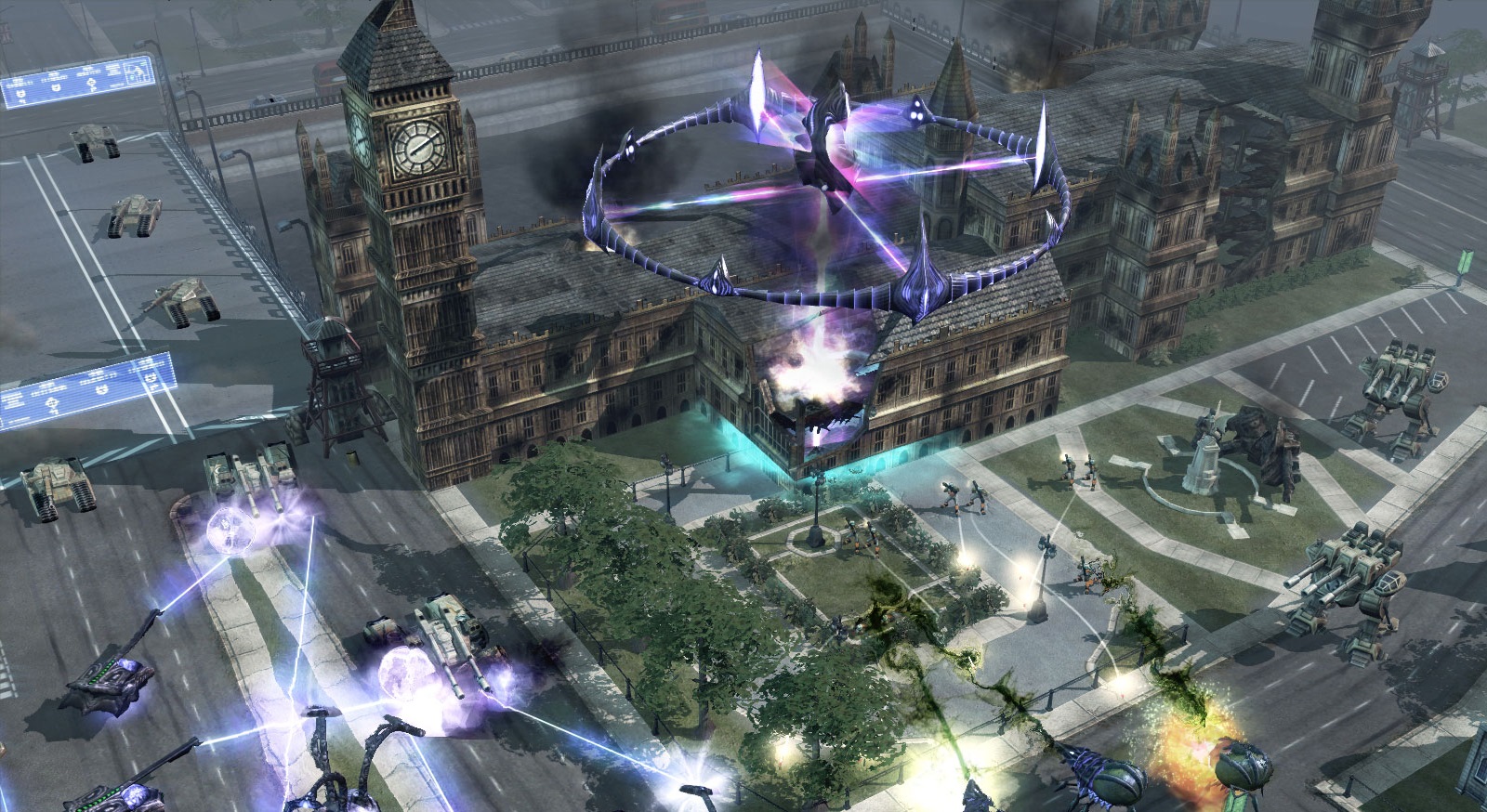
An interesting contrast to Red Alert 3, Command & Conquer 3: Tiberium Wars is actually pretty conservative, trying very hard not to rock the boat. It's true to the series' legacy, despite not being designed by Westwood, and at the time was celebrated for that fact: we were hungry for more C&C, and that's what we got. Nothing more, nothing less.
Set in the dark, apocalyptic environment of Tiberian Sun, C&C3’s setting is tried-and-true, and the SAGE engine does a good job of presenting its dusky, desolate terrain. Its units are about what you’d expect—riflemen, rocket troops, APCs, medium and heavy tanks, and so on. You build bases, harvest tiberium, and spend it on units to throw at each other. There’s campaigns full of cheesy FMV where Michael Ironside, Grace Park and Tricia Helfer advise you, and Billy Dee Williams goes nuts and yells at you to launch a doomsday bomb. It is undeniably a C&C game.
And yet, it’s a forgettable one. Between the engine, the mechanics, and the setting, there’s not much new in C&C3 that wasn’t already in Tiberian Sun and Generals. For a sequel four years in the making, it wasn’t nearly fresh enough to be a memorable new chapter in Command & Conquer history. Instead, it simply served as the beginning of the series’ journey from innovation to mediocrity—and as the first C&C made entirely without Westwood or Westwood Pacific, it’s not hard to guess why the magic was gone.
Command and Conquer: Renegade (2002)
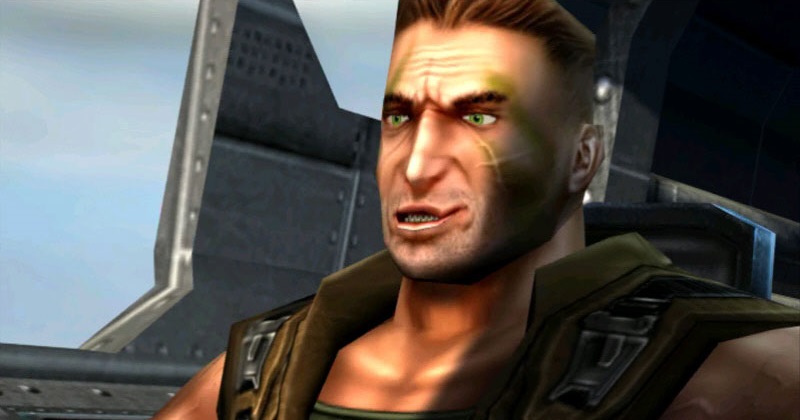
Renegade is a fascinating outlier. Absolutely a C&C game, but not an RTS. Not at all. It's a shooter, but one that revels in its setting. It's also, tragically, the last of Westwood's games, before EA unceremoniously killed off the studio and merged it with EA Los Angeles.
Compared to the likes of Half-Life, Quake, Unreal Tournament and Counter-Strike, Renegade isn't especially impressive. Though it did feature extensive vehicle combat alongside its infantry combat, Battlezone 2 and Codename Eagle preceded Renegade by multiple years and did combined arms better, and with Battlefield 1942 only a few months from release, there was no shortage of games for Renegade to be unfavorably compared against.
But Renegade isn't a hoot because it's a great FPS. The fantasy it sold was being a soldier in Command & Conquer. Renegade did accomplish that, taking players through a hearty campaign of first-person destruction against an entire army of Nod soldiers, bases, and vehicles. Its multiplayer also proved popular—enough so for fans to create Renegade X, a modern remake of the game’s online play for a whole new generation. While it was certainly a flawed game, Renegade’s combination of FPS and nostalgia won enough hearts to earn its status as a beloved C&C game. Crucially, it was just fun, and being able to experience the universe Westwood had created from this novel perspective was a real treat.
Command & Conquer: Tiberian Sun (1999)
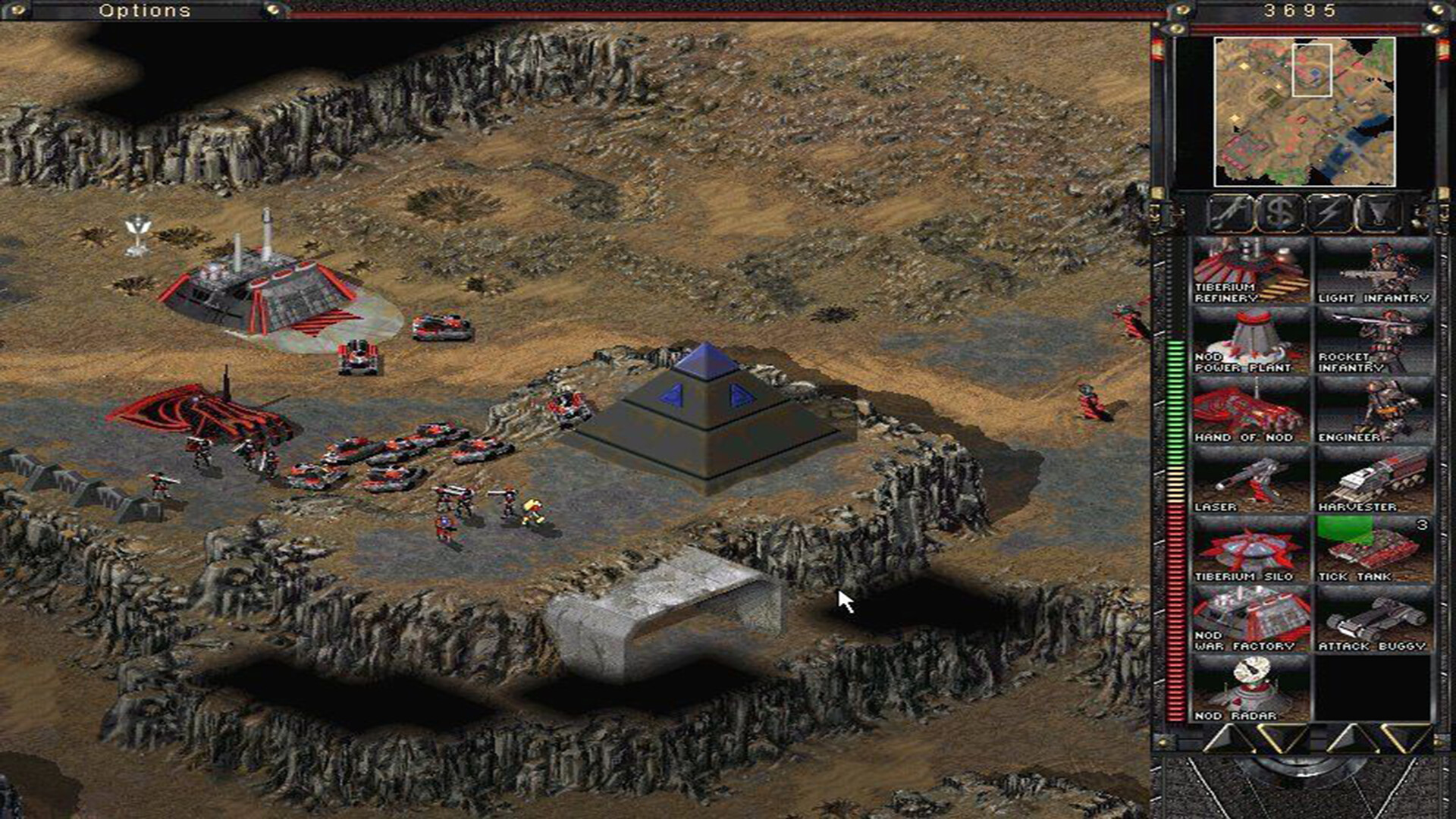
Depending on who you ask, Tiberian Sun is either a great sequel or a horrible disappointment in C&C history. It’s not hard to see why—representing a complete shift in tone and setting, and with markedly different gameplay, it was a very different experience to the C&Cs before it.
Gone were the bright greens of sunny grassland maps, the fast-paced soundtrack and the simple, modern military units; instead, the game took place in a dark, desolate wasteland, haunting melodies scoring its battles between futuristic factions. Gone were the simple pleasures of basic riflemen and medium tanks carrying the day; Tiberian Sun featured sonic disruptors and flame-spewing tanks that burrowed through the ground, stomping bipedal mechs and unsettling cyborg commandos that kept chasing you even when you blew their legs off. Its style was very distinct, and if you didn’t like it, you probably weren’t going to like how it played either. That the game was rushed out the door by Westwood’s new publisher EA and was somewhat unpolished as a result didn’t help.
For all its gloom, though, Tiberian Sun was an excellent addition to the series. The engine looked fantastic for the time, and the blend of sprite-based infantry with voxel-based vehicles made for a memorable graphics style. Terrain deformed from explosions, pockmarking the map as you battled over it. Its satisfying selection of futuristic soldiers and vehicles balanced against each other well to allow a variety of tactics throughout its campaign and its multiplayer.
And boy did it sound great. Composer Frank Klepacki did an excellent job scoring all of the classic C&Cs, and Tiberian Sun is no exception, with a moody techno soundtrack that perfectly communicated “the world is a Tiberium-infested hellscape, enjoy fighting to the death over it”. Listen to this track, Valves— it sums up the combination of gloom, mystery, and ceaseless combat that Tiberian Sun’s world was about
Command & Conquer (1995)
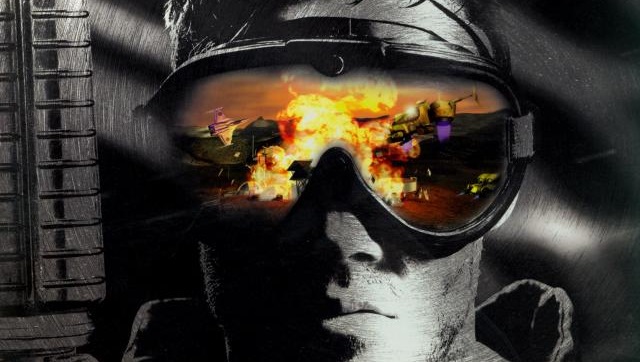
The chatter of mini-guns firing. The throaty roar of advanced guard towers launching missiles. The hiss of flame tanks spraying. The foreboding, sinister hum as the obelisk of light charged up, before an angry pulse of light screamed out over the battlefield. Thinking about the original Command & Conquer conjures up these sights and sounds in my head, and then as if it were yesterday.
Westwood may have set the stage with Dune 2, but it was Command & Conquer that truly resonated with PC gamers. The game was simple enough to learn—construct a base, harvest resources, build an army, and attack the enemy—but its variety of different units across its two different factions lent it great replayability and depth, its familiar modern military theme made understanding those units intuitive, and its excellent, fast paced soundtrack from Frank Klepacki coupled well with its quick, action-packed gameplay. C&C’s multiplayer took the game to even greater popularity with local and online matches against human opponents; each game box shipped with two CDs, allowing you and a friend to play against each other with just one purchase.
And let's not forget the FMV cutscenes, starting a tradition that persisted through every sequel except for Generals. Joe Kuncan’s performance as Nod’s charismatic leader Kane is wonderful, and together with Eric Martin as the GDI’s straight-laced Brigadier General Sheppard, these cutscenes go far to set the tone and immerse you in the story of each side’s campaign. While every C&C since tried to go bigger with its stories, I'm still a sucker for the simple, understated briefings and interludes of Command and Conquer’s cutscenes. Is that camera still running?!
Command & Conquer: Red Alert (1996)
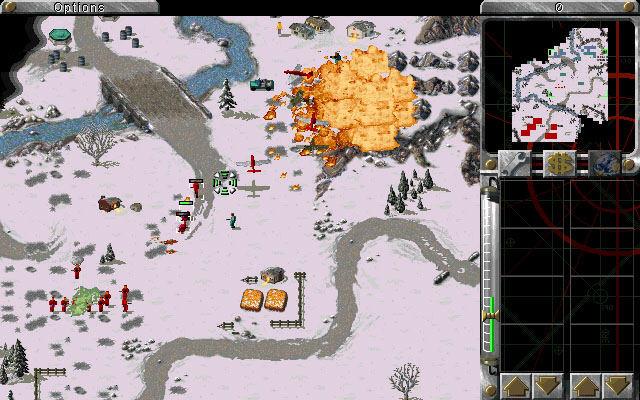
It’s 1996, and Hell March is blaring through your speakers. Hitler has been handshaken from existence, and Stalin's testing nerve gas on a local village. Machine guns spew bullets as your aircraft strafe desperate partisans. A fuel barrel gets hit and the whole place goes up in a fireball, guerrillas running around on fire as your infantry level the town. There’s some crates of money underneath the church to buy more planes with.
Red Alert refined Command & Conquer's blueprint. It featured the same mechanics, but with a huge number of new units and buildings, set in a more interesting alternate history cold war where Hitler never took power and World War 2 was fought against Stalin and Soviet Russia instead. Tesla Coils and Chronospheres set the tone of this new, weird-science world, and the expanded variety in units and buildings made Red Alert's battles even better than its predecessor. It applied that extra depth and polish that made C&C's classic formula into something that stands the test of time—even today.
Red Alert didn’t just provide more toys to play with—it iterated on existing systems and brought in new ones, such as introducing a second, rarer resource that provided higher cashflow, unique hero units like Tanya, and naval combat that supported the main land forces. It also included a map editor for players to create their own multiplayer battlefields.
Red Alert featured a campaign for each faction with a full complement of FMV cutscenes, just like its predecessor, and again they do a wonderful job of setting the tone. Whether you’re being intimidated in Stalin’s boardroom or brought up to speed by the Allies' no-nonsense generals, the briefings invested you in Red Alert’s world, and in a campaign where your commanding officers become more and more dependent on you as you gradually become their Top Man.
It was a surprising sequel full of the RTS magic Westwood was becoming known for, pushing the nascent series to new heights, but the best was yet to come.
Command & Conquer: Remastered Collection (2020)
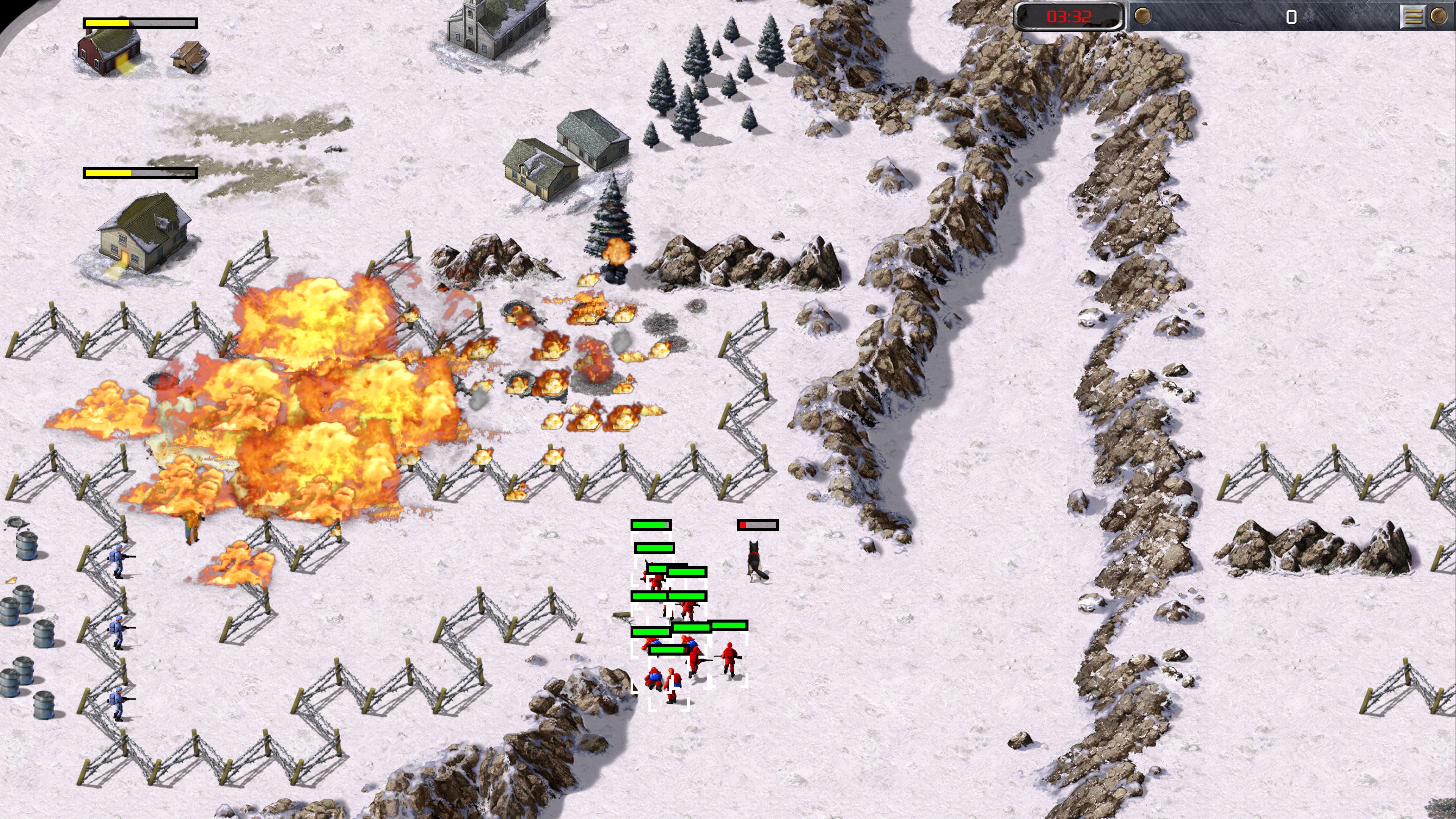
The best way to experience C&C and Red Alert today is, of course, through Command & Conquer: Remastered Collection, which contains both games and all three expansions, rebuilt in 4K.
This isn't just a bit of upscaling magic, though. It's the full remaster treatment, from Petroglyph, no less—itself an accomplished RTS studio. So we've got remastered art, remastered and re-recorded music from Frank Klepacki, mod support, an improved UI, enhanced multiplayer support with custom lobbies, extra missions previously only available on the console version, a map editor, updated controls... it's a big ol' list.
The remaster's biggest achievement, though, is showcasing just how exceptional these games still are. The updates are excellent, but they're just enhancing what already existed, making the games a bit more palatable for a modern audience. What's impressive is how brilliant all the stuff that hasn't really changed much remains. These are games that were designed nearly 30 years ago, but they feel just as relevant and vital today.
Command & Conquer: Generals
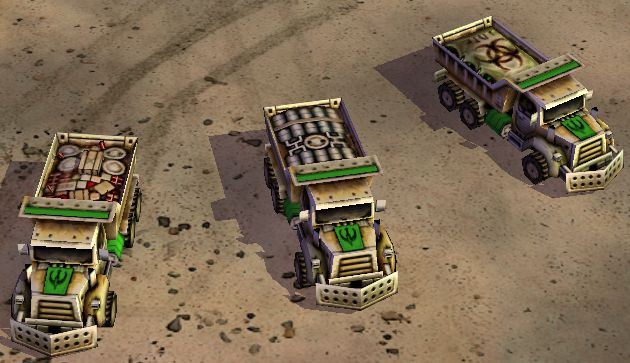
Often regarded as the black sheep of the C&C family, Command & Conquer: Generals was thematically a straight-faced (on the surface) parody of a modern world in conflict, a three-way free-for-all where the US and China vie for control of the world while the Global Liberation Army slams bomb-trucks into anyone who looks at them funny. A world where an American tank defeats an anthrax-armed tractor and then stoically states “It’s the right thing to do." Where despite all the heavily armed tanks, high-tech lasers and elite infantry, an angry mob armed with AK-47s is one of the scariest forces on the battlefield. Despite being based on our modern day world, Generals almost rivals Red Alert when it comes to absurdity.
It also rivals RA2 for being the best C&C game ever. When Generals first appeared, fans criticised its many changes. They pointed to the removal of resource fields for a new supply dump based economy, to the abandonment of the Tiberium and Red Alert worlds for a more realistic one, to the lack of FMV cutscenes and the new 3D engine, all as to signs it wouldn’t be a good C&C game. They were wrong.
While Generals deviated from everything previous, it stands on its own as a fantastic RTS experience. The intricacies that made later Westwood C&Cs so good are all here—infantry, vehicles and static defenses all interact in a satisfying way that makes for a balanced environment where every option is viable, and more importantly, enjoyable. Basic tank rush? Works like it always did. Combined arms siege crawl supported by artillery and point defense? Slow, but hits like hell. Heliborne infantry drops to secure key map points? Fancy, and effective.
Each unit and faction had its own interesting application to the battlefield, each was well-themed (and well voice-acted), and each was satisfying to command. New additions like a faction-based talent tree, unit upgrades, and some secondary abilities all added to the game’s depth without becoming overwhelming. Generals' campaign was much more forgettable than any previous C&C entries, but its multiplayer and skirmish modes were second to none—whether battling the AI or other players, it felt infinitely replayable, an RTS where you were limited only by your personal skill and how intricately you knew your units. And there were a lot of units to know.
Yet more was added in Zero Hour, Generals’ expansion pack that provided new units, campaign missions, and an in-depth challenge mode. Players would pick one of nine newly introduced generals who emphasized various powers—US Air Force, Chinese Infantry, GLA Toxins, and so on—and then fight against the other eight leaders one-by-one on their respective home turfs, each a unique map that played to their specific strengths. Each was a tough fight, and after beating all eight generals on your run, you fought a final boss who used tech from all three factions at once. Zero Hour complemented Generals wonderfully, assuring its place as one of the best expansion packs ever made, for one of the greatest RTS games of all time.
Command & Conquer: Red Alert 2 (2001)
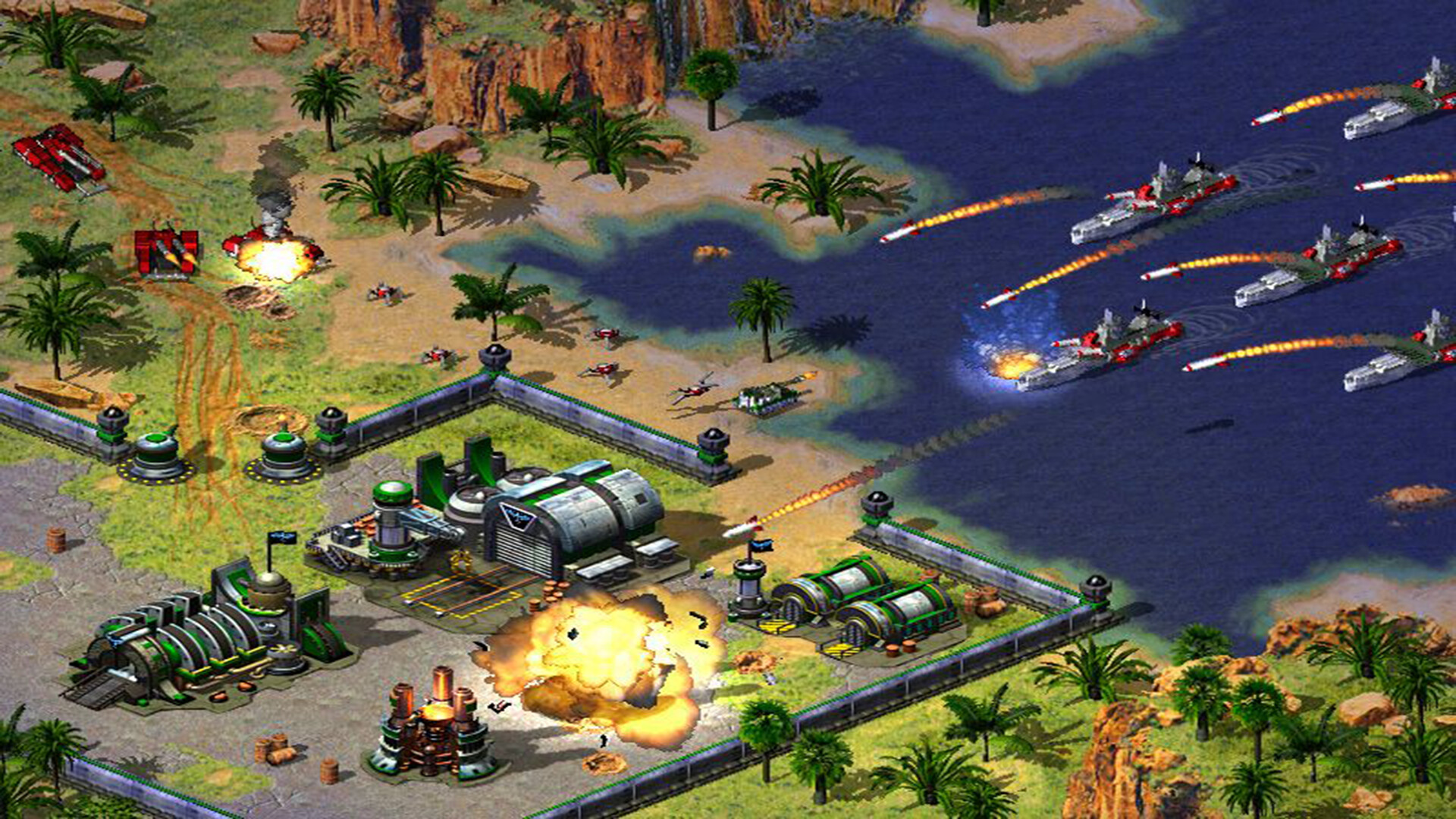
Is it done, Yuri? No, Comrade Premier. It has only begun. Red Alert 2 is, without a doubt, the height of Command & Conquer. It takes everything great about the series and refines it to near perfection. RA2's units interact with each other brilliantly, each excelling in one area while being beaten out in another, at once being both distinct and yet wonderfully balanced against each other. Its wide range of maps are bright and interesting, filled with various buildings you can garrison with infantry or capture to gain special benefits as well as plenty of chokes, bridges and water.
Its campaign is excellent, and its cutscenes are fantastic—a just-right level of ham that enjoys its own campiness but stops before going over the top. While all the characters are great, Udo Kier is the standout as Yuri, the psychic advisor to Soviet Premier Romanov who is equal parts intimidating and entrancing.
Speaking of Yuri, RA2’s impressive expansion revolves around him, the aptly titled Yuri’s Revenge, where the game doesn’t just receive new units but an entirely new faction just for Yuri himself. RA2 is a great base game, but Yuri’s Revenge is its perfection, introducing an entirely new psychic-based army full of unique units and keeping them all balanced to boot. It also introduces a new campaign which tasks you to save a Microsoft parody from Soviet destruction, fight off dinosaurs in a time travel mishap, and command a cosmonaut assault on Yuri’s moon base.
But what really makes RA2 the greatest C&C is the design of its armies. Each faction has a huge variety of units, and even more interesting interactions between them. A great example is the Allied IFV, a fast moving buggy that gains a completely new weapon system for each type of infantry you put inside it. Crazy Ivans can apply time bombs to any unit they touch, even allied units, allowing you to create improvised suicide bombers—but why stop there when you can use Yuri to mind control local wildlife like cows and have them deliver the bombs instead?
Various other features round out RA2’s scraps, including the ability to garrison infantry in buildings, introducing a larger variety of interesting superweapons, providing an entire set of different Allied and Soviet sub-nations to pick that gave you unique units and powers, and expanding upon Tiberian Sun’s veterancy bonuses (if you ever see a three-stripe Prism Tank, just run). The resulting game is a triumph in its genre, and stands as one of the greatest games of all time.

Fraser is the UK online editor and has actually met The Internet in person. With over a decade of experience, he's been around the block a few times, serving as a freelancer, news editor and prolific reviewer. Strategy games have been a 30-year-long obsession, from tiny RTSs to sprawling political sims, and he never turns down the chance to rave about Total War or Crusader Kings. He's also been known to set up shop in the latest MMO and likes to wind down with an endlessly deep, systemic RPG. These days, when he's not editing, he can usually be found writing features that are 1,000 words too long or talking about his dog.

